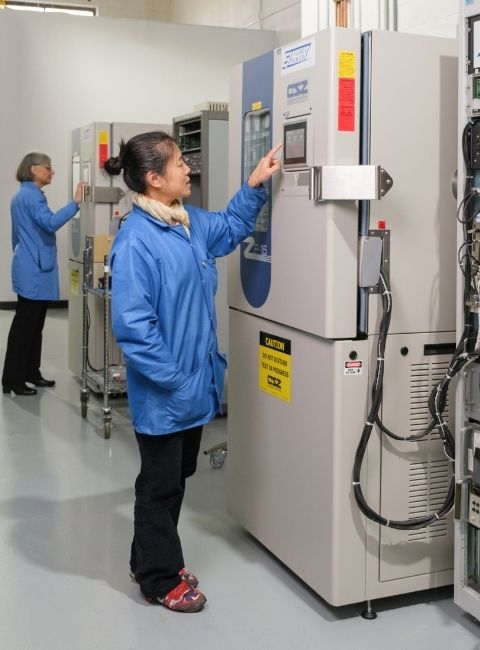MIL-STD-810 Temperature Testing for Custom Power Supplies
Viable Power performs MIL-STD-810 temperature testing on its power supplies in accordance with the specific client requirements and needs. These tests are performed at our facilities to ensure the durability and reliability of our power supplies when operating in extremely hot, cold, or rapidly fluctuating temperatures.
When temperature testing under MIL-STD-810 (current version being MIL-STD-8910H), we perform a series of stress tests that help ensure the longevity, reliability, and durability of our ruggedized power supplies.
We look for specific things, such as the ability of the circuit boards, transistors, and other parts of the power supply to stand up to high heat and freezing temperatures while continuing to function normally.
MIL-STD-810 Temperature Testing That We Perform
We perform three separate temperature tests:
Each test has up to three procedures that we perform in all temperature ranges included in the specification (with or without humidity). The temperature/humidity tests can be done at operating or non-operating conditions.
To perform the tests, we utilize a state-of-the-art thermal chamber that has the following features:

We can program our temperature and temperature/humidity chambers to meet the requirements defined in MIL-STD-810, RTCA-DO-160, MIL-HDBK-2164A, and others. Our equipment is regularly calibrated with results traceable to NIST.
Test Method (501.7) – High Temperature
The High-Temperature test assesses how the power supply performs in high temperatures for included temperature environments and ambient air. The specified basic daytime temperature ranges for induced conditions and ambient are 30-43°C (86-110°F) and 30-63°C (86-145°F). We perform this test at all temperature ranges included in the specification, with or without humidity.
MIL-STD-810 Test Method 501.7- High Temperature consists of three test procedures:
Test Method (502.7) – Low Temperature
This test intends to determine and evaluate the effect of low temperatures on the power supply’s integrity, performance, material safety during operation, manipulation, and storage.
502.7 specifies three climatic conditions:
MIL-STD-810 Test Method 502.7 – Low Temperature consists of two test procedures:
Test Method (503.7) – Temperature Shock
The temperature shock test determines whether the power supply can sustain and withstand sudden temperature changes without experiencing a performance decline or physical damage. “Sudden temperature changes” are defined as changes greater than 10°C (18°F) over the duration of one minute.
There are three different problems that could arise from a temperature shock:
MILS-810-STD Test method 503.7 – Temperature Shock consists of one test procedure with four different variations:
MIL-STD-810 Temperature Tested Power Supplies
Viable Power is an established Canadian custom power supplier manufacturer that proudly serves the military (aerospace, naval, ground) and civil aviation industries worldwide. The temperature tests that we perform under MIL-STD-810H are qualification tests that are performed before any other tests. Our stringent part selection process helps to ensure that selected parts can withstand the customer’s specified environment.
We also include a verification of the adequacy of the cooling arrangement in the verification process. Functional electrical tests are performed on the power supply before and after the qualification test—if the results are out of specification, we conduct a thorough investigation and analysis of the part failure mode to confirm that the environment caused the part to fail.
You can rely on Viable Power to ensure that our ruggedized power supplies have passed the necessary MIL-STD-810 temperature testing requirements and are ready for service. You can get an overview of our various testing services by visiting our services page.


